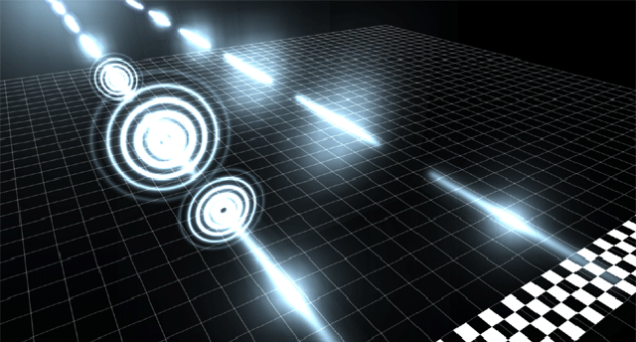A group of physicists at the University of Glasgow have recorded a new way to slow down the speed of light that doesn’t involve running it through a medium like glass or water. Instead, they found the speed can be altered by first running it through a mask, which changes the shape of the photon itself, and makes it move through a vacuum slower than an unaltered photon.

To test their theory, the researchers built a dual-course racetrack that fired photons on either side and recorded when they hit a detector a meter away. The first group of photons were fired in a normal way, while the second group were fired through a filter to shape the light into either a Gaussian or Bessel beam. When the photons from both groups were fired at the same time, the unaltered group beat the altered group to the finish line by approximately 0.001 percent.
There are two reasons for this result.
One is that the photons moving through the filter slowed the photons some, much in the same way that moving through glass or water would. The second reason is a bit more complex, as it demonstrates that the photons were slower even after passing through the filter (remember, light is supposed to speed back up to its normal constant after passing through a medium). This experiment showed that light can be caused to travel slower than its constant if its shape has been changed.

The researchers explain that the mask caused some of the photons in the group to move at a slight angle to the others; this caused the group to slow down as a whole (worth noting: the researchers were using group velocity to measure the light’s speed). This discovery means that their research will not upend one of the basic principles of modern-day physics; rather, it provides valuable insight for future researchers to be aware of when operating lab or astronomical observation equipment, and making sure that what they are recording is not being impacted by shape changes that occur naturally.
Read the full study in Science, published under the title “Spatially structured photons that travel in free space slower than the speed of light.”
Advertisement
Learn more about Electronic Products Magazine





